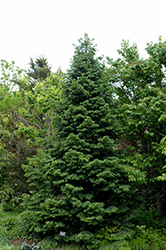Fri & Sat 8am - 8pm
Sun 8am - 7pm
Anytown, USA 12345
fax: 261.787.0463
e-mail: info@successgc.com


Plant Finder

Height: 60 feet
Spread: 15 feet
Sunlight:
![]()
![]()
Hardiness Zone: 4b
Description:
This stately and beautiful tree is considered a relatively small spruce; silvery new shoots emerge to become bright green needles; young plants may be injured by spring frosts; has a slow growth rate and may become quite narrow with age
Ornamental Features
Wilson's Spruce is primarily valued in the landscape for its distinctively pyramidal habit of growth. It has attractive green evergreen foliage which emerges silver in spring. The needles are highly ornamental and remain green throughout the winter.
Landscape Attributes
Wilson's Spruce is a dense evergreen tree with a strong central leader and a distinctive and refined pyramidal form. Its relatively fine texture sets it apart from other landscape plants with less refined foliage.
This is a relatively low maintenance tree. When pruning is necessary, it is recommended to only trim back the new growth of the current season, other than to remove any dieback. Deer don't particularly care for this plant and will usually leave it alone in favor of tastier treats. It has no significant negative characteristics.
Wilson's Spruce is recommended for the following landscape applications;
- Accent
- Vertical Accent
Planting & Growing
Wilson's Spruce will grow to be about 60 feet tall at maturity, with a spread of 15 feet. It has a low canopy, and should not be planted underneath power lines. It grows at a slow rate, and under ideal conditions can be expected to live for 60 years or more.
This tree does best in full sun to partial shade. It is very adaptable to both dry and moist growing conditions, but will not tolerate any standing water. It is considered to be drought-tolerant, and thus makes an ideal choice for xeriscaping or the moisture-conserving landscape. It is not particular as to soil type or pH, and is able to handle environmental salt. It is highly tolerant of urban pollution and will even thrive in inner city environments. This species is native to parts of North America.
